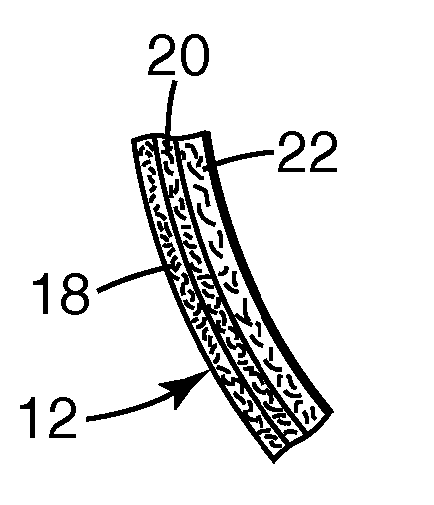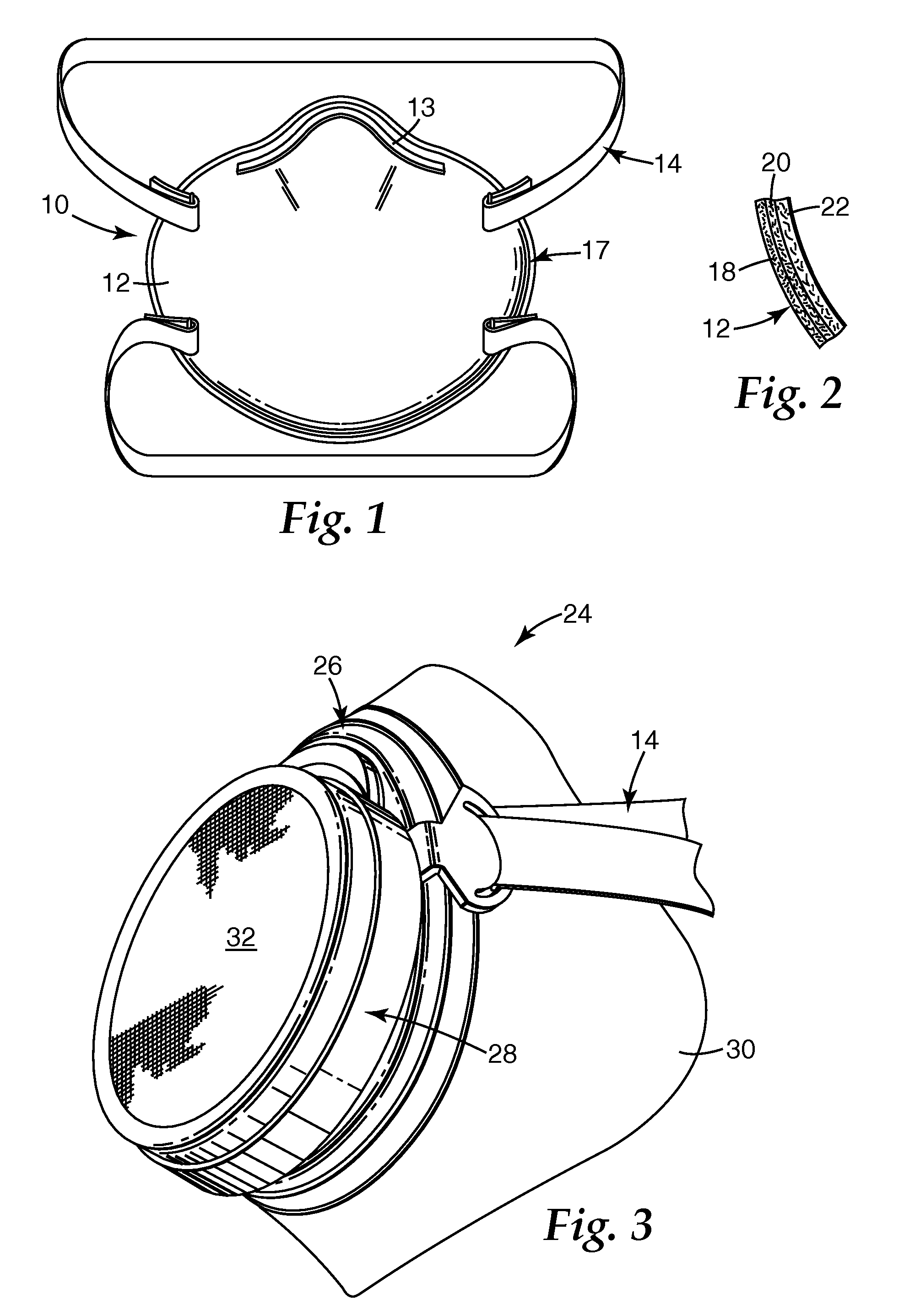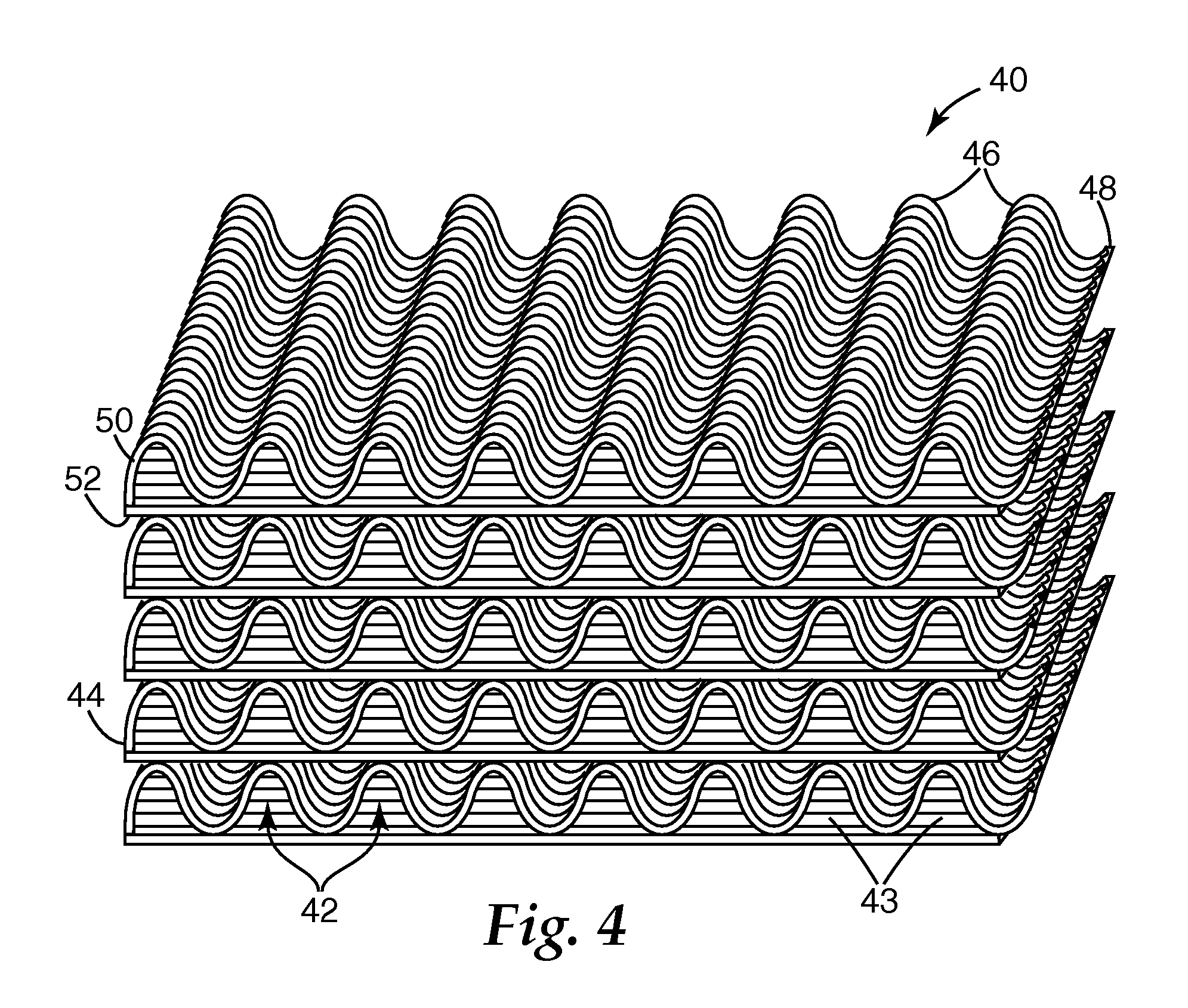Electrets and compounds useful in electrets
a technology of electrets and compounds, applied in the field of electret preparation, can solve the problems of affecting the filtering capability of webs, affecting the filtering efficiency of electret filters, and electret filters losing electret enhanced filtering efficiency,
- Summary
- Abstract
- Description
- Claims
- Application Information
AI Technical Summary
Benefits of technology
Problems solved by technology
Method used
Image
Examples
example 1
[0097]Preparative Compound I
[0098]To a 250 mL 1 neck round bottom equipped with a reflux condenser and magnetic stirrer was added naphthalene-2,6-dicarboxylic acid (10.00 grams), thionyl chloride (16.00 g) and chloroform (86 mL). The mixture was stirred and heated under reflux for 8 hours. The clear solution was cooled to room temperature and the solvent evaporated in a stream of nitrogen. The resulting solid was suspended in 75 ml of hexane and evaporated to dryness with a rotoevaporater to yield 11.71 grams of the diacid chloride illustrated below as a yellow crystalline solid having the structure
[0099]
, which was confirmed by infrared spectral analysis.
[0100]To Preparative Compound I (11.71 grams) was added stearyl alcohol (26.27 grams) and the contents were heated to 80° C. with magnetic stirring. After five hours the clear molten product was cooled to room temperature. The crude solid product was then recrystallized from isopropyl alcohol (350 mL) and the crystalline solid was ...
example 2
[0102]To a 500 mL resin flask equipped with a mechanical stirrer was added dimethyl naphthalene-2,6-dicarboxylate (23.77 grams) and stearylamine (55.09 grams). The mixture was stirred and heated to 210° C. for 5½ hours. The resulting crude product was cooled to room temperature and recrystallized from xylene (350 mL). The resulting thick slurry was diluted with isopropyl alcohol (350 mL) collected in a Buchner funnel and washed with isopropyl alcohol. The solid product was dried overnight in a vacuum oven (under conditions of 1 Torr and 40° C.). The yield of the white crystalline product was 48.3 g (i.e., 69%). The structure of the product, i.e., 2,6-naphthalene-distearylamide, was determined to be
[0103]
and was confirmed by infrared spectral analysis.
examples 3-7
Control and Examples 3-7
[0104]Preparation of Blown Microfiber Webs (BMF)
[0105]BMF webs were prepared by extruding a thermoplastic blend as described in Van A. Wente, Superfine Thermoplastic Fibers, “Industrial Engineering Chemistry, vol. 48, pp. 1342-1346, using a Brabender-Killion conical twin screw extruder (Brabender Instruments, Inc.) operating at a rate of from about 3.2 kg / hour to about 4.5 kg / hour (7-10 lb / hour) and at an extrusion temperature of from about 280° C. to about 300° C. The thermoplastic blend included EXXON 3505 polypropylene as the base polymer and 1% by weight of one of the additives set forth in Table 1. The resulting web had an effective fiber diameter of from 7 μm to 8 μm and a basis weight of from 46 grams per square meter (g / m2) to 54 g / m2, or from 60 g / m2 to 70 g / m2. The actual effective fiber diameter and basis weight for each web is set forth in Table 1 below.
[0106]The web of the control had a basis weight of 60 g / m2.
Hydrocharging Method
[0107]The BMF we...
PUM
| Property | Measurement | Unit |
|---|---|---|
| temperatures | aaaaa | aaaaa |
| temperatures | aaaaa | aaaaa |
| temperatures | aaaaa | aaaaa |
Abstract
Description
Claims
Application Information
 Login to View More
Login to View More - R&D
- Intellectual Property
- Life Sciences
- Materials
- Tech Scout
- Unparalleled Data Quality
- Higher Quality Content
- 60% Fewer Hallucinations
Browse by: Latest US Patents, China's latest patents, Technical Efficacy Thesaurus, Application Domain, Technology Topic, Popular Technical Reports.
© 2025 PatSnap. All rights reserved.Legal|Privacy policy|Modern Slavery Act Transparency Statement|Sitemap|About US| Contact US: help@patsnap.com



